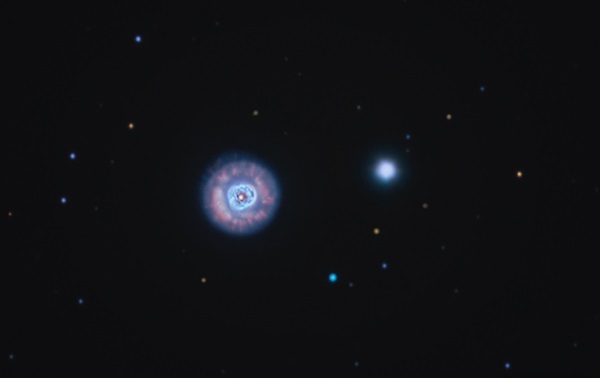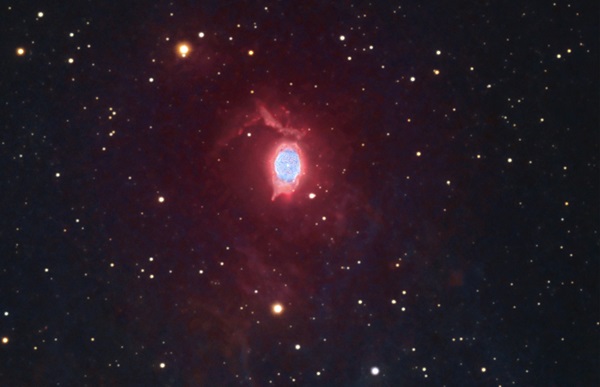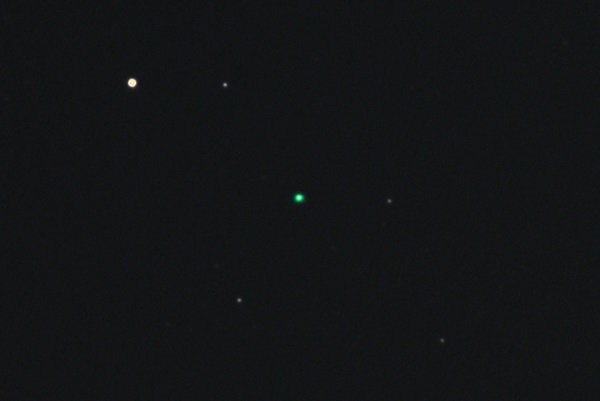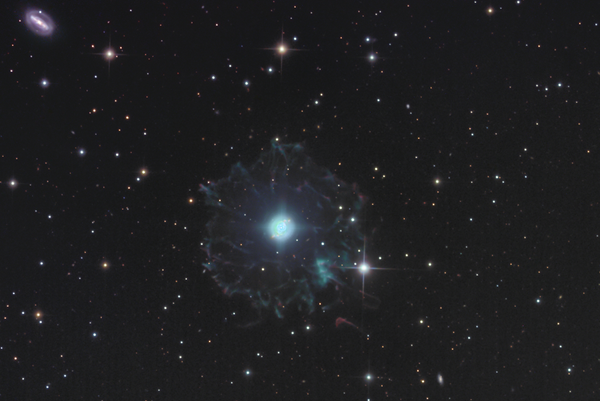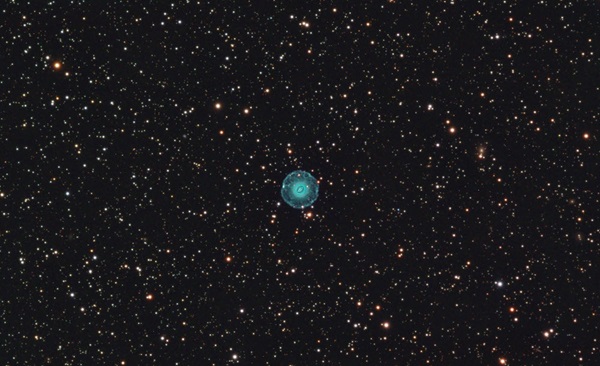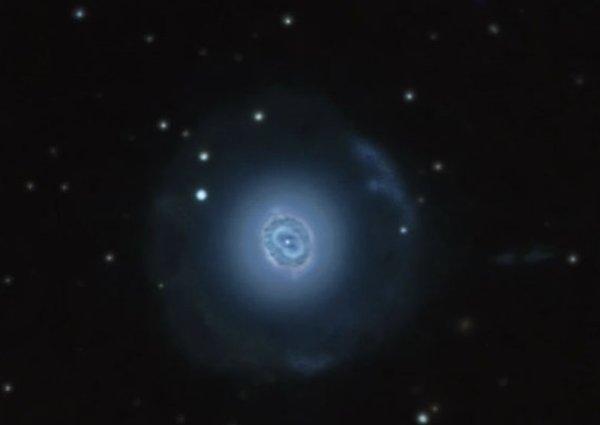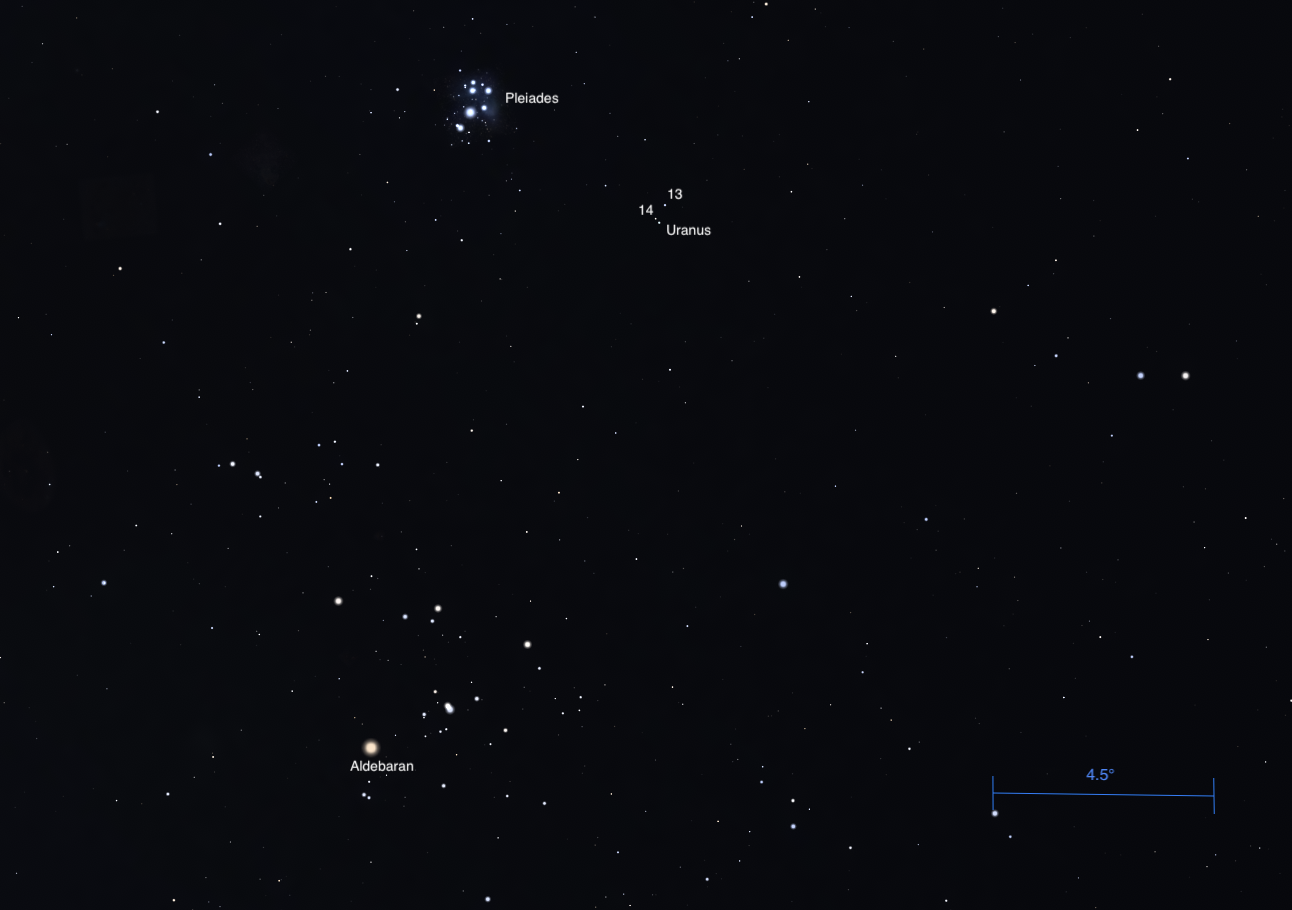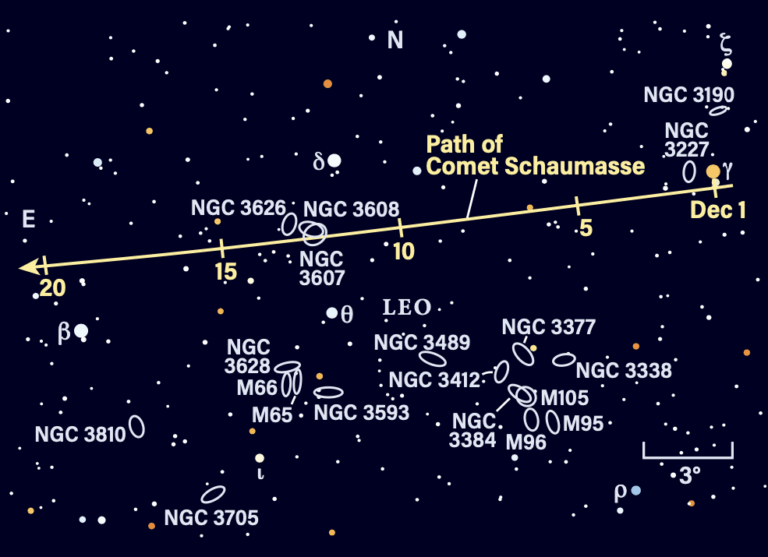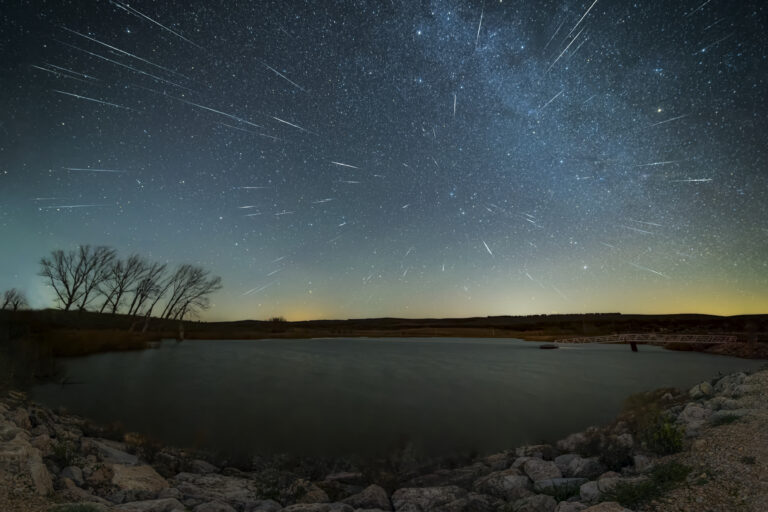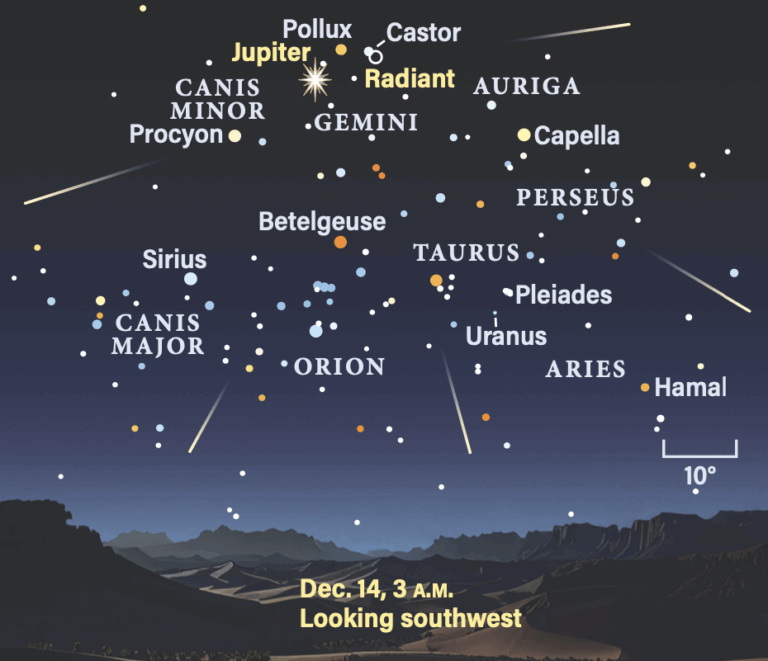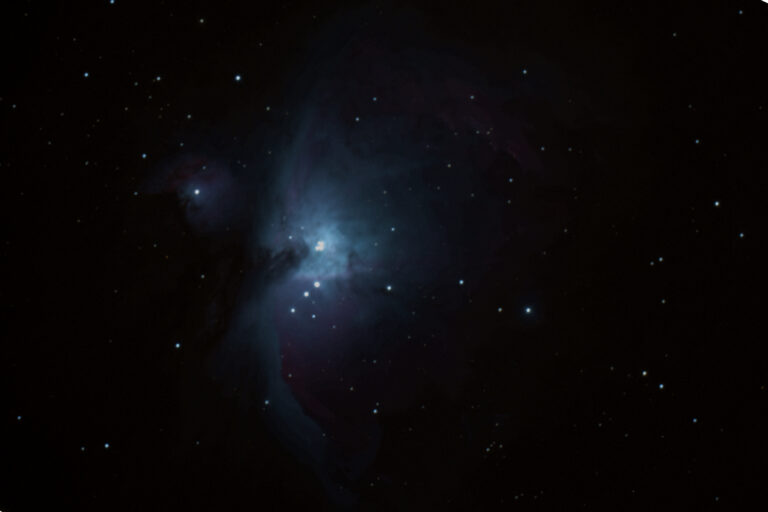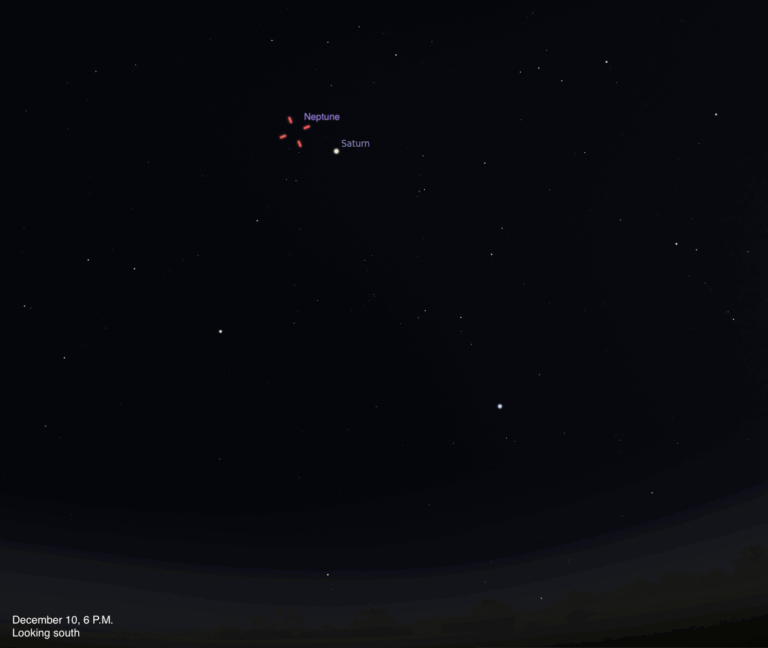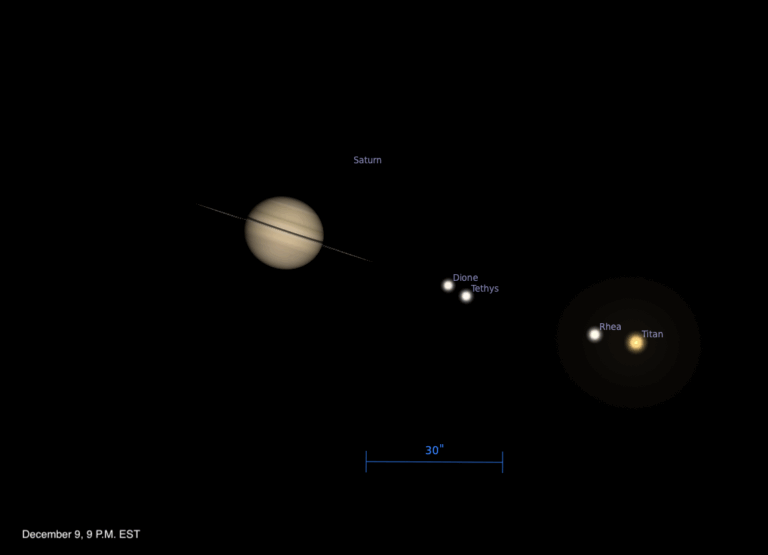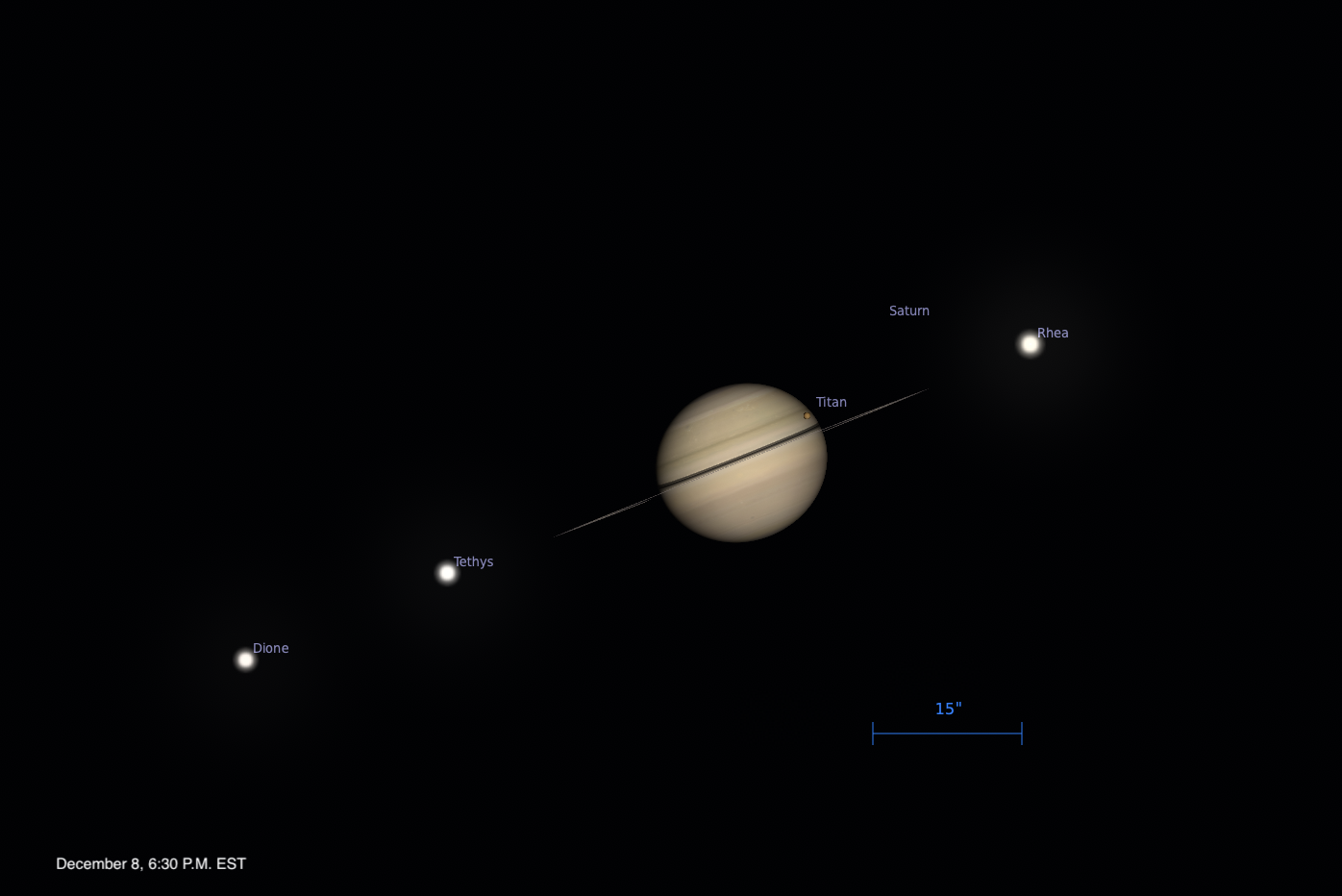Key Takeaways:
- Planetary nebulae are colorful clouds of gas from dying stars.
- Brighter nebulae show more color due to intense light.
- Many planetary nebulae are visible even from suburban areas.
- Larger telescopes reveal more detail and color in these nebulae.
For new observers, the night sky appears to be a monochrome scene of black and white. Although astronomy books and websites are replete with objects revealing vivid reds, pinks, blues, and greens, gazing at most of these same objects with a small telescope shows none of that. Light from the deep sky appears mostly as shades of gray.
But those of us with more experience know the universe is a colorful place. It’s just that color in the universe requires intensity — enough photons to stimulate the cones in your eyes. These color receptors are an evolutionary response to humans spending most of our lives in daylight: When light is plentiful, its subtle differences in wavelength convey useful information, which we perceive as color. By contrast, while the eye’s rods are highly sensitive to light to help us see clearly in nocturnal environments, they don’t register color.
In the case of the Sun, its many photons at every wavelength saturate all our color receptors at once, making it appear white. And the Moon consists of dark basalts and gray dust and rock fragments — no color there unless there is an eclipse or its light is reddened by Earth’s atmosphere as it rises or sets. But looking elsewhere in the solar system, Mars, Uranus, and Neptune show us disks that are intensely red, green, and blue, respectively. And their shape and bright color are duplicated by one group of deep-sky objects: planetary nebulae.
Colorful targets
Planetary nebulae are the product of Sun-like stars shedding and then lighting up their outer layers late in life. Their blues, greens, and reds come from glowing gases such as hydrogen, helium, nitrogen, and oxygen.
Long before this was known, two 18th-century astronomers, Antoine Darquier de Pellepoix and William Herschel, both considered the shape of these nebulae planetlike. Herschel is widely credited with first calling them planetary nebulae, although there is no definitive answer as to whether the term truly originated with him.
Despite the name, only about 20 percent of planetary nebulae are spherical. The rest occur in a variety of shapes, resulting from the particular way each central dying star sloughs off its outer layers. Their density ranges from 100 to 10,000 times that of empty interstellar space. The more colorful nebulae, which appear on this list, tend to have higher densities and appear round or oval in a telescope. That’s because denser regions of gas glow more intensely.
Observing tips
The invention of the Oxygen-III (OIII) filter revolutionized observing planetary nebulae because the filter’s peak transparency is the same wavelength as these objects’ strongest emission. However, although a filter dramatically improves image contrast, it also blocks out natural color. To see their true color, it’s best to observe planetaries without a filter. The full intensity of the unfiltered target will stimulate your cones, giving these compact nebulae color and even making them bright enough to spot from suburban skies. By contrast, faint and extended nebulae usually don’t show color, and the special filters are designed for observing when the goal is simply finding the object, not revealing its color.
One common thread between the colorful planetaries on our list is their distance. Most are located between 1,000 and 5,000 light-years away. At these distances, they range from 15″ to 40″ in diameter — except for the Ring Nebula (M57), which is much larger. Bright planetaries can show color in telescopes as small as 6 inches. Larger apertures are better and all bear magnification well. A lot of planetaries have tenuous outer shells from previous eruptions, but these are too faint for most amateur telescopes. However, many on our list do reveal their central star — the white-hot engine lighting up these glowing balls from within.
The list
NGC 40 is the first target — and the most challenging. Located in the circumpolar northern skies at 72° declination in Cepheus, it’s magnitude 10.4 and 35″ across. It sits about 3,500 light-years distant. Some 1,000 light-years behind it is the unrelated, tenuous supernova remnant CTA 1.
With moderate telescopes, this nebula resembles a partial ring that looks more like a parenthesis. It is also called the Bow Tie Nebula. The magnitude 11.4 progenitor star in the center is a rare Wolf-Rayet star — a type of star deficient in hydrogen and producing strong stellar winds. With a full magnitude of difference between the star and its nebula, some observers consider this one of the best targets in which to observe the progenitor. In large apertures (20 inches or more), NGC 40 shows a reddish hue, which is atypical for planetaries as normally, ionized oxygen and nitrogen give these objects green or blue colors.
NGC 2392 was once known as the Eskimo Nebula because it has a round interior surrounded by a ring of “fluffy” gas reminiscent of a head ensconced within a parka hood. However, after considering the term’s derogatory history, NASA decided in 2020 to refer to the object only by its catalog name. It’s recently also been described as the Lion Nebula, comparing the exterior gas to a lion’s mane. Sources disagree on its exact distance: This dying star is located somewhere between 3,000 and 6,000 light-years away.
At magnitude 10.1, it’s the brightest nebula in Gemini and an easy target with small telescopes. Seeing its bluish-green color requires more aperture rather than darker skies. Can you see it in an 8-inch scope?
The Ghost of Jupiter lies at least 1,400 light-years away and is about 2 light-years in diameter. The structure is a thin ring surrounded by a larger, tenuous envelope visible with larger telescopes. The central star shines at magnitude 11.7 and is visible in moderate apertures.
A decade later, that telescope, which included glass cast from the same formula as the 200-inch Hale telescope, was donated to the University of Louisville. When I observed M57 with that same telescope again at Moore Observatory, the green color was more muted. I’ve never seen it as bright green as in my childhood observation. It makes me wonder whether children see colors more intensely than adults. Or am I just remembering that vivid vista with green-tinted glasses?
The Blinking Planetary is a compact 27″ by 24″ and magnitude 9.8. The central star is about 0.5 magnitude fainter. It lies about 2,200 light-years distant.
NGC 7662 is Andromeda’s brightest planetary nebula and sports a simple and visually accurate moniker: the Blue Snowball. At 2,200 light-years away, it is an easy magnitude 8.3 and spans 32″ by 28″. One of my most memorable observations of this object was with a 12-inch Alvan Clark reflector at the University of Louisville’s on-campus observatory. Viewed from atop the four-story Natural Sciences building in an urban area, the Blue Snowball lived up to its name, proving that deep-sky observing can be done even with light pollution present. The high contrast of compact planetaries makes them ideal targets for mediocre skies.
Of course, there are plenty of other planetary nebulae that show color. This list is just the beginning. Whether you use a large or small telescope, this group of deep-sky objects offers a broad spectrum of challenges. From discerning color, detail, and the central star to simply separating the distant, tiny nebula itself from the rich background of Milky Way, these colorful and compelling targets present opportunities to test any stargazer’s mettle.

